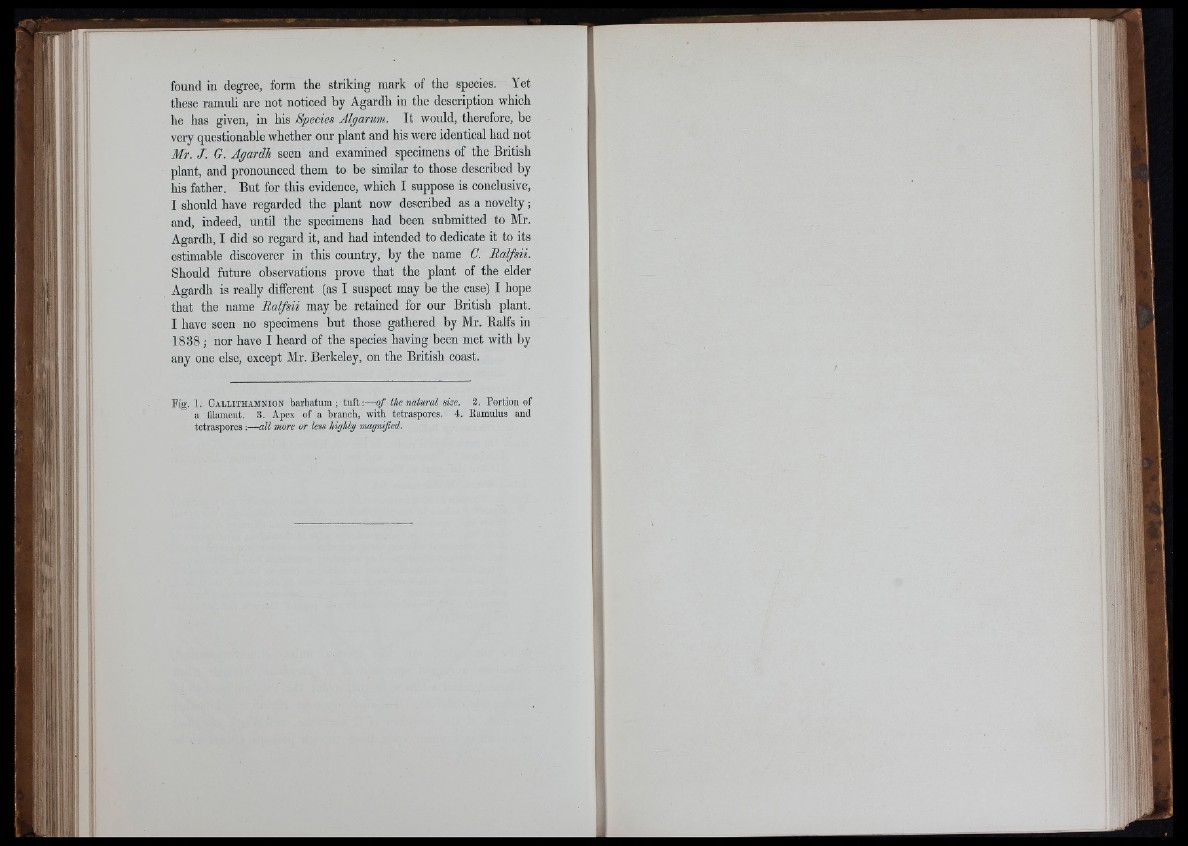
found in degree, form the striking mark of the species. Yet
these ramuli are not noticed by Agardh in the description which
he has given, in his Species Algarim. It would, therefore, be
very questionable whether our plant and his were identical had not
Mr. J. G. Agardh seen and examined specimens of the British
plant, and pronounced them to be similar to those described by
his father. But for this evidence, which I suppose is conclusive,
I should have regarded the plant now described as a novelty;
and, indeed, until the specimens had been submitted to Mr.
Agardli, I did so regard it, and had intended to dedicate it to its
estimable discoverer in this country, by the name C. Balfsii.
Should future observations prove that the plant of the elder
Agardh is really different (as I suspect may be the case) I hope
that the name Balfsii may be retained for our British plant.
I have seen no specimens but those gathered by Mr. Ralfs in
1838; nor have I heard of the species having been met with by
any one else, except Mr. Berkeley, on the British coast.
Fig. 1. Callithamnion barbatum; tu f t:— of the natural size. 3. Portion of
a filament. 3. Apex of a branch, with tetraspores. 4. Ramulus and
tetraspores ;— all more or k
1